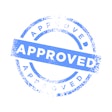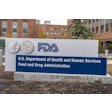
At the beginning of every new year, do you promise to do something new, better, or different? Why not consider something for the long-term health of your practice -- figuratively and literally?
Given the turbulence of the past several years, I believe it's time to get things on an even keel again -- and that includes regulatory compliance. It's one of the few things that affects every aspect of your practice, from team and patient safety to data security, fiscal responsibility, and, last but not least, your reputation.
Maintaining regulatory compliance in a changing world is challenging to say the least. The COVID-19 pandemic has reinforced the fact that approaching regulatory compliance the way we did in the past was simply not good enough. This year's compliance resolutions are updated best practices that will ensure the protection of your patients and practice.
Here are my top five regulatory compliance resolutions for 2022.
 Linda Harvey.
Linda Harvey.1. Assign accountability
Think of regulatory compliance as a team sport -- together, everyone achieves more. And in this case, no one person is saddled with all of the responsibility.
With everyone co-managing the practice's overall compliance efforts, it's easier to achieve and sustain maximum results. For example, the clinical team can share infection control and U.S. Occupational Safety and Health Administration (OSHA) responsibilities in the clinical arena. The business office team may share certain HIPAA or coding/billing responsibilities. This creates an effective system of checks and balances.
2. Budget for compliance
Merely checking a box for free compliance training does not fulfill all your regulatory obligations. All regulatory bodies (OSHA, HIPAA, state) expect an active effort that includes ongoing compliance tasks; not a one-and-done annual training.
Take HIPAA security, for example. Does your IT partner actively monitor your network for hacking? Are you confident you could restore your data if your patient data were compromised with ransomware? Ensuring this level of preparedness requires experience, time, and financial resources. If your team doesn't have the time or the expertise, it's even more important to budget for expert assistance.
3. Chase the knowledge
Seek out reliable, accurate information. Do you know if your compliance source has read and thoroughly understands the latest regulations and guidelines? You should have copies of regulations such as OSHA's Bloodborne Pathogens Standard, along with the U.S. Centers for Disease Control and Prevention's (CDC) 2003 Guidelines for Infection Control in Dental Health-Care Settings.
And don't forget any recent CDC interim guidance related to COVID-19. Granted, learning about new dental materials or the latest digital technology is much more exciting, yet savvy practice owners must also fully understand their legal responsibilities.
4. Dive into your policies
Remember, your policies and procedures should reflect your office processes as well as fulfill the specific requirements of any given regulation. When was the last time they were reviewed and/or updated? Regulators expect to see that you've conducted an annual review along with making any updates as needed.
OSHA's Bloodborne Pathogens Standard specifically spells out that requirement related to the documentation of an annual review of your exposure control plan. If you purchased a fill-in-the-blank manual, check that all blanks are correctly completed. An uncustomized manual sitting on a shelf will not protect you in the event of a complaint or unannounced inspection.
5. Evaluate your progress
Take time to review your compliance progress incrementally throughout the year. Identify items that can be briefly reviewed during monthly team meetings such as tips and updates, security awareness reminders, and infection control processes. Other items can be addressed quarterly.
This way you won't get caught short at the end of the year. Many experts agree that inch by inch, anything's a cinch. Small steps taken throughout the year yield a big payoff at the end.
Think of these five key 2022 regulatory compliance resolutions as the ABCs of a new year of increased safety and minimized risk. Implement them now to start your year off with peace of mind.
Linda Harvey is a nationally recognized healthcare risk management and compliance expert who helps dentists and teams navigate regulatory requirements. She is the founder and president of the Dental Compliance Institute as well as a compliance consulting firm. Linda has worked in corporate risk management and has been recognized as a distinguished fellow in the American Society for Health Care Risk Management.
The comments and observations expressed herein do not necessarily reflect the opinions of DrBicuspid.com, nor should they be construed as an endorsement or admonishment of any particular idea, vendor, or organization.




















